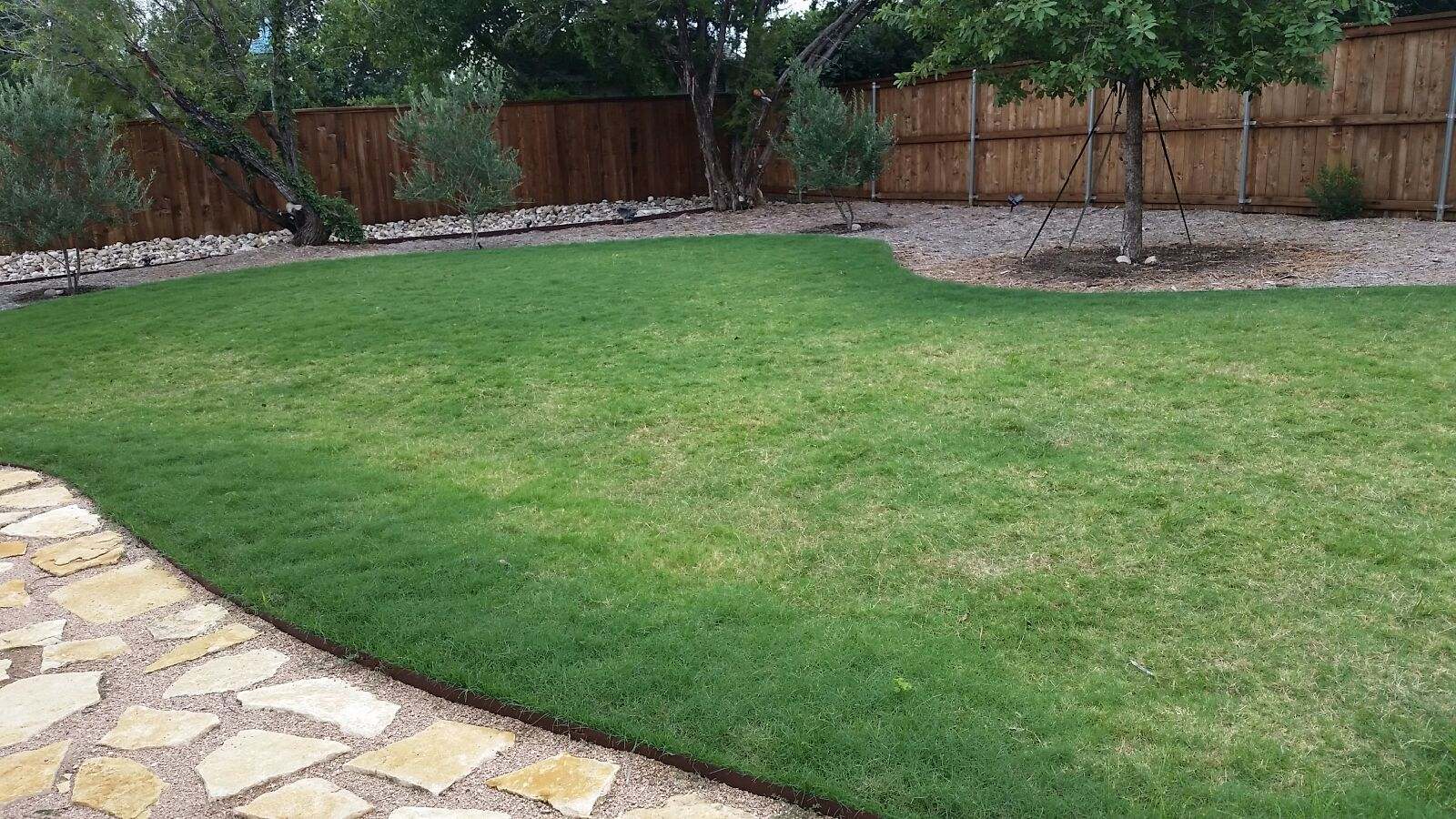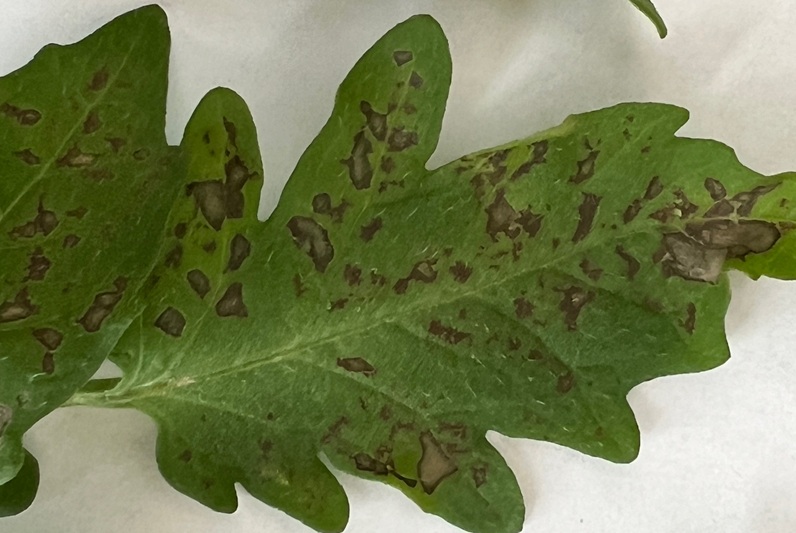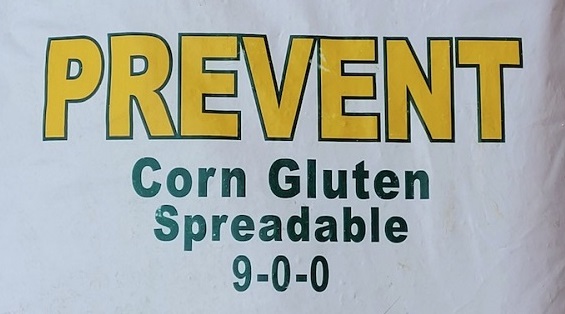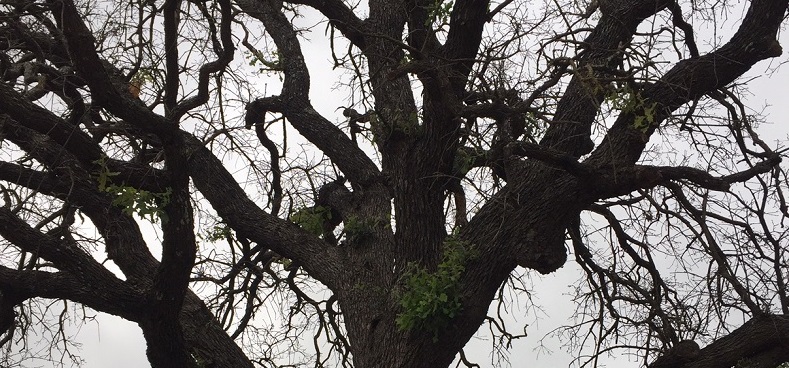Most of the people I have talked to about their declining (dying) lawns this year have not heard about this rapidly spreading disease of lawns. Take-all root rot (TARR), or take-all patch, does just that. It is a fungus that kills ALL of the grass plant: roots, stolons (runners) and leaves. It is most common on St. Augustine, but has been observed on Bermuda and Zoysia as well. In fact, it was originally known as “Bermuda Decline”.
What are the symptoms of TARR?

Symptoms of take-all patch usually appear as diseased patches of turf during late spring and early summer. The initial symptoms on St. Augustine are yellow patches with leaf blades that appear chlorotic. These symptoms may persist through the summer. Eventually the roots become completely rotted and shriveled. In the final stages of decline, diseased stolons gradually succumb to hot summer temperatures. Affected patches of turf can range from 1-2 feet in diameter, or may appear as larger areas up to 5-10 feet in diameter. The edges of the patches may appear reddish brown in color when the disease is actively developing.
What other issues can be confused with TARR?
Take all patch should not be confused with white grub damage which can also appear at the same time of the year. Look for the yellow or chlorotic leaf extensions on St. Augustine that has not been mowed for several days. Symptoms also include brown shriveled roots that are killed by the fungus as opposed to white grub damage where the roots are actually removed by insect feeding.
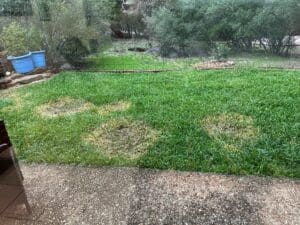
Take all patch should also not be confused with the Brown Patch fungus, which occurs in the spring and fall, when cool weather sets in. Brown patch fungus results in leaves turning brown, but when pulled on, they pull easily off the stolon, as if rotted, and the stolon remains green.
While we tend to notice the dying turf during the growing season, the pathogen actually infects the stolons, rhizomes and crowns in the fall and spring. The fungus will grow along the root surfaces and rhizomes, spreading from plant to plant underground. Long distance movement can occur by the transport of infected soil or plant material, but only rarely on contaminated equipment.
Take all patch fungus can be confirmed by sending a sample of turf to The Texas Plant Disease Diagnostic Lab at TX A & M. You may download the FORM from their website. Follow directions carefully when taking a sample and send it “overnight” on a Monday so they receive a fresh sample.
Is chemical control available?
Chemical control of the take all patch fungus is limited. Fungicides have shown to be moderately effective in suppressing the fungus in the parts of the lawn that are not yet affected, but show little effect on turf already showing symptoms of the disease. Applications of azoxystrobin, propiconazole or myclobutanil in the early spring and in the fall (before dormancy) applications are most effective. (If fungicides are used, they may negate the effect of the beneficial microorganisms in the soil.) As always, follow the label directions exactly and pay attention to temperature requirements.
Research has shown that increasing microbial activity and lowering the pH with the use of sphagnum peat moss as a top dressing has resulted in control and reduced symptoms on home lawns. Spread the peat moss at the rate of one to two 3.8 cf bags per 1000 sq. ft., to a depth of no more than 1/2″. It is better to make two 1/2″ applications per year than to apply too much at one time. Water-in the peat moss after application with 1/2″ of water.
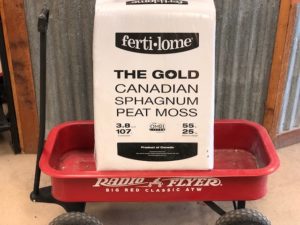
How can we prevent TARR?
Avoiding excessive irrigation, high nitrogen fertilizer applications and weed and feed products, providing adequate drainage, aerating turf and applying an organic topdressing before symptoms appear will help prevent the disease from developing. Turf weakened by the use of Weed and Feed Products with high nitrogen levels are more susceptible to infection by this disease. Do not use weed and feed products or high nitrogen fertilizers!!!!!
Once symptoms have appeared, maintain adequate irrigation and apply fertilizer in frequent light applications to compensate for the damage to the root system. MicroLife Organic Fertilizer with beneficial microorganisms and mycorrhizal fungi is an excellent product to prevent infection and maintain the infected lawn.
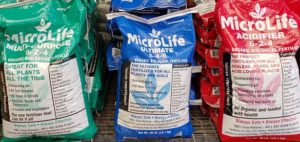
Summary
If your lawn is not yet affected, be proactive and water and fertilize effectively. Use MicroLife Organic Fertilizer and water deeply but less often. If you suspect that your lawn is infected, send a sample to the Diagnostic Lab for confirmation and follow the recommendations for control of take all patch. We will be glad to help you determine how much peat moss you will need to top dress your lawn with, and will be happy to provide you with more options as they become available.

